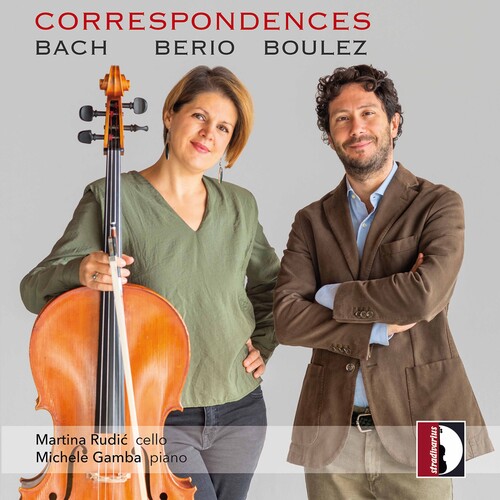Show results for
Deals
- 4K Ultra HD Sale
- Action Sale
- Alternative Rock Sale
- Anime sale
- Award Winners Sale
- Bear Family Sale
- Blu ray Sale
- Blu ray Special Editions
- Blues on Sale
- British Sale
- Classical Music Sale
- Comedy Music Sale
- Comedy Sale
- Country Sale
- Criterion Sale
- Electronic Music sale
- Hard Rock and Metal Sale
- Horror Sci fi Sale
- Kids and Family Sale
- Metal Sale
- Music Video Sale
- Musicals on Sale
- Mystery Sale
- Naxos Label Sale
- Page to Screen Sale
- Rap and Hip Hop Sale
- Reggae Sale
- Rock
- Rock and Pop Sale
- Rock Legends
- Soul Music Sale
- TV Sale
- Vinyl on Sale
- War Films and Westerns on Sale

Correspondences
- Format: CD
- Release Date: 2/4/2022

Correspondences
- Format: CD
- Release Date: 2/4/2022
- Composers: Johann Sebastian Bach, Luciano Berio
- Label: Stradivarius
- UPC: 8011570372154
- Item #: 2463832X
- Genre: Classical
- Release Date: 2/4/2022

Product Notes
"The idea of this album came to us during the first Covid-19 lockdown in March 2020. Martina and I share a deep enthusiasm for new music and we are always eager to find the common roots of composers who have been a constant part of our development as musicians, going right back to our school years. What have Berio and Boulez in common with Bach? Firstly, polyphony. The Bach Sonatas, played here on piano and cello, are in fact "Sonate a 3", in which the use of different timbres and rhythms goes along with the Bach's mastery of counterpoint and the sheer inventiveness of the musical motifs. We find that these elements of the composer's creativity are also very present in the music of Berio and Boulez. In Berio's Sequenza for cello, the exploration of the idea of polyphony on a monodic instrument, the variety of atmosphere and the pure technical virtuosity find their roots in Bach's music. Boulez, with his Douze Notations for piano, pays a huge debt to the old German tradition of counterpoint, filtered through the twelvetone system of Schönberg. Boulez clearly stated that he wanted to make fun of the Second Viennese School, and yet the character of each piece and the virtuosity of each tiny nuance recall Bach's heritage, in particular his rhythmic precision and the effective way that the different 'voices' can be heard. These ideas have encouraged us to offer listeners some fascinating parallels between centuries which can seem so far from one another. We hope that re-building these bridges in our own time might help to maintain dialogues and echoes of the history of our common cultural patrimony." (Michele Gamba and Martina Rudic)

